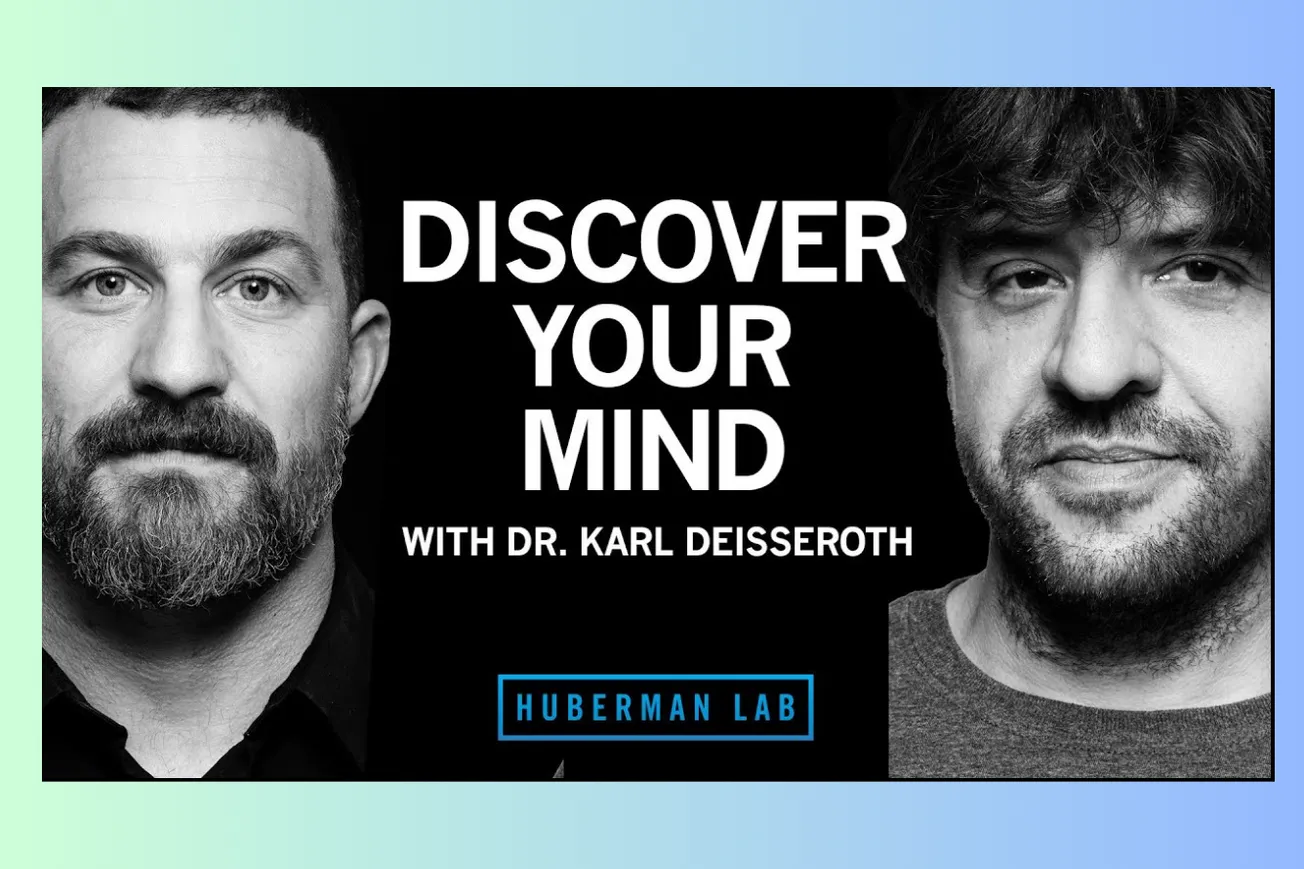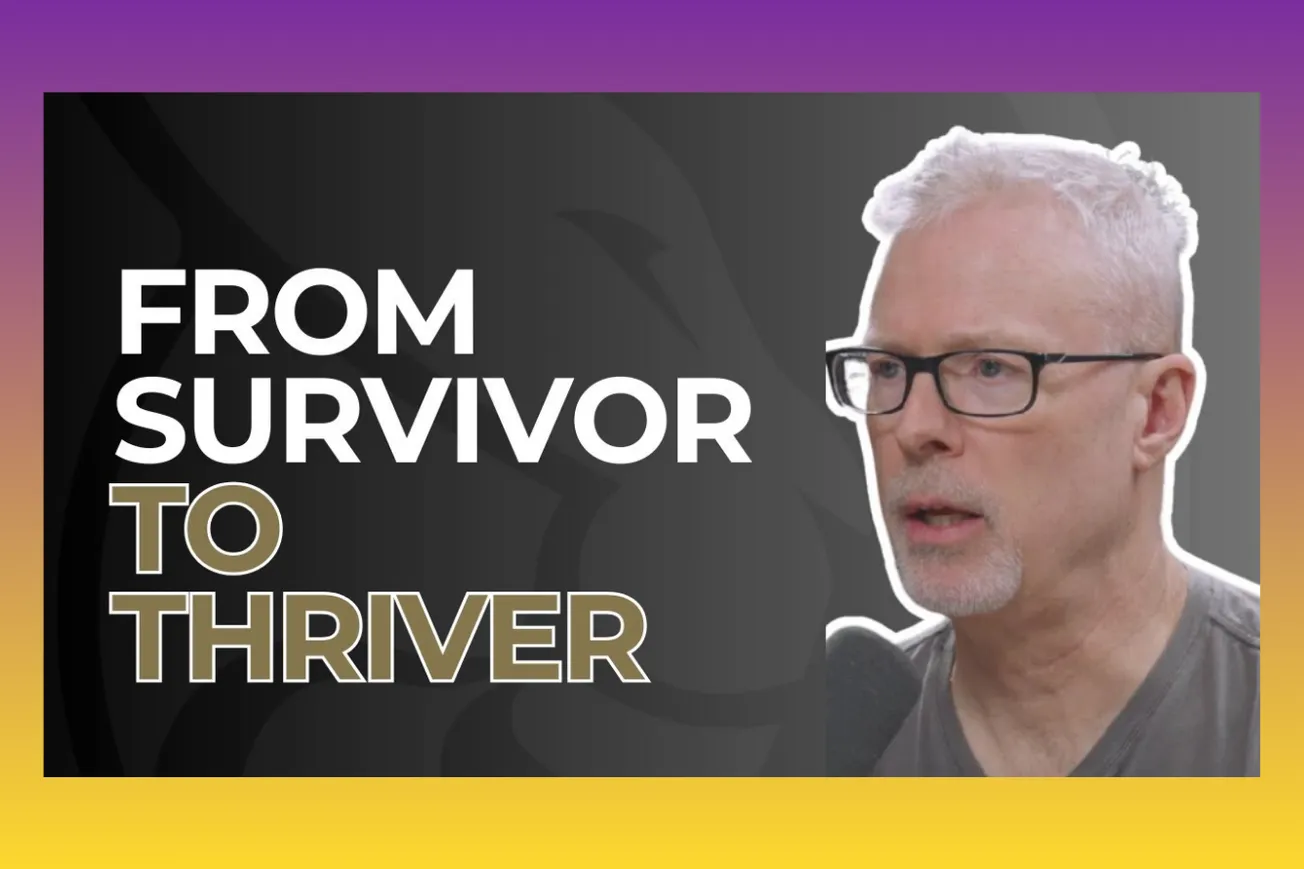Table of Contents
Explore the frontiers of psychiatry and neuroscience with Dr. Karl Deisseroth, a Stanford psychiatrist and researcher pioneering tools like optogenetics to understand and treat complex mental illnesses, offering hope through precise, science-based approaches.
Timeline Overview
- 00:00 – 15:00 — Introduction to Dr. Karl Deisseroth, his dual role as a psychiatrist and research scientist. Discussion on the fundamental differences between neurology (diagnosing visible physical issues) and psychiatry (diagnosing through words for invisible disorders like depression, schizophrenia, autism). Exploration of the challenges in psychiatric diagnosis due to the lack of objective tests and reliance on patient verbal reports. The impact of stigma on seeking treatment and the potential worsening of conditions like anxiety converting to depression if left untreated.
- 15:00 – 30:00 — Delving into the subjective nature of feelings and the difficulty in objectively comparing internal states. Dr. Deisseroth explains how psychiatrists move beyond jargon to understand patient experiences, focusing on concrete examples like hopelessness ("I can't even think about tomorrow"). Discussion on the limitations of self-awareness and the potential for external observation (family, technology) to provide early warnings for conditions like depression, citing early morning awakening as a key sign. Overview of successful psychiatric treatments like Cognitive Behavioural Therapy (CBT) for panic disorder and antipsychotics for schizophrenia (addressing positive symptoms like hallucinations), alongside the effectiveness and limitations of electroconvulsive therapy (ECT) for severe depression.
- 30:00 – 45:00 — The need for deeper understanding in psychiatry, contrasting it with cardiology's clear model (the heart as a pump). Introduction to optogenetics: its origins tracing back to 19th-century botany observing light-sensitive algae. Explanation of channelrhodopsins (light-activated proteins from algae) and how they allow control over neuron activity (on/off) using light, enabling causal understanding of brain circuits. Discussion of the technical challenges overcome (gene delivery, light sensitivity, targeting specific cells) to make optogenetics work in behaving animals (mice) and eventually humans.
- 45:00 – 1:00:00 — Milestone achievement: using optogenetics (channelrhodopsins delivered via safe AAV vectors) to restore light sensitivity in a blind human patient, highlighting the decade-long journey from basic research to clinical application. Emphasis on the broader significance of optogenetics for understanding brain circuitry to inform all types of treatment (medications, therapy, stimulation) rather than just direct optogenetic therapy. Dr. Deisseroth recounts his personal journey from wanting to be a neurosurgeon, driven by a fascination with the brain and poetry, to being profoundly impacted by his psychiatry rotation, recognizing the immense need and mystery in the field.
- 1:00:00 – 1:15:00 — Discussion on vagus nerve stimulation (VNS) for depression: its rationale (accessibility, connection to neuromodulator centres) and limitations (lack of specificity, side effects like hoarse voice, dose limits). How optogenetics could offer more precise VNS by targeting specific nerve fibres, but requires identifying the correct fibres first. Preference for developing better, targeted medications informed by optogenetic research over invasive implants. Exploration of brain-machine interfaces (BMIs) like deep brain stimulation (DBS) for OCD and the potential for closed-loop systems (detecting pathological patterns and stimulating precisely when needed), again underscoring the need for causal understanding from optogenetics.
- 1:15:00 – 1:30:00 — Addressing ADHD: its subtypes (hyperactive vs. inattentive), the need for diagnosis across different life domains (home, school), and progress towards quantitative EEG-based diagnostics. Discussion on the potential impact of modern lifestyle (e.g., constant phone checking mimicking OCD-like build-up/relief cycles) on attention, but emphasizing that a psychiatric diagnosis requires disruption of social/occupational functioning, which phone use often doesn't meet (and might even aid). Dr. Deisseroth shares his personal method for deep thinking and writing: protecting dedicated quiet time, often late at night, focusing intensely without distraction, and processing thoughts verbally through internal sentences.
- 1:30:00 – End — Reflection on different cognitive styles (stillness vs. movement for thinking). Introduction to Clarity and hydrogel tissue chemistry: making the brain transparent by building an internal gel scaffold, anchoring key molecules (proteins, RNA), and washing away light-scattering lipids. This allows unprecedented 3D visualization of brain structure and connections without physical sectioning. Discussion on the importance and challenges of studying the human brain's microstructure and translating findings from animal models (e.g., mouse studies on dissociation using ketamine) to human conditions, while acknowledging conserved mechanisms across species. Final thoughts on the promise and peril of psychedelic medicine (LSD, psilocybin, MDMA) – their potential to alter the perception of reality by lowering the threshold for unlikely brain hypotheses to reach consciousness, potentially helping conditions like depression by 'unsticking' rigid thought patterns. Emphasis on the need for rigorous, safe research and the potential for these agents to facilitate learning and new perspectives, even after the acute effects wear off. Dr. Deisseroth's optimism for the future of understanding and treating the mind.
Key Takeaways
- Psychiatry diagnoses disorders of the mind primarily through words, lacking the objective physical markers often found in neurology.
- Stigma remains a major barrier, preventing individuals from seeking timely help for mental health issues, which can worsen conditions.
- Optogenetics, using light-sensitive proteins from algae, allows scientists to precisely control brain cell activity with light, revolutionizing brain research.
- Understanding brain circuits causally through optogenetics is key to developing more targeted and effective treatments for psychiatric disorders, including better medications.
- Clarity technology makes brains transparent, enabling detailed 3D visualization of neural structures and connections without slicing.
- Dissociation involves a detachment of self from bodily experience; research using ketamine in mice and humans identified specific brain rhythms involved.
- Psychedelic compounds may work by altering the brain's filtering of reality models, potentially helping conditions like depression by allowing new perspectives.
- Brain-machine interfaces and deep brain stimulation show promise but require better understanding of target circuits for optimal, specific effects.
- Dr. Deisseroth emphasizes protected, focused time for deep thinking and writing as crucial for managing complex work and generating insights.
Psychiatry vs. Neurology: The Realm of Words
- Psychiatry and neurology, though historically linked and potentially merging in the future, currently differ significantly in their diagnostic approaches. Neurology often deals with conditions where physical evidence, like stroke damage on scans or seizure activity on EEGs, is measurable.
- Psychiatry, conversely, addresses disorders like depression, schizophrenia, or autism where diagnoses rely heavily on subjective reports and observations, using words as the primary tool. Dr. Deisseroth notes, "psychiatry is is much more mysterious and the only tools we have are words."
- This reliance on language presents challenges, particularly with patients who are non-verbal or whose lack of speech is itself a symptom (e.g., in severe depression or autism). Psychiatrists must skillfully probe beyond simple labels like "depressed" to understand the patient's actual experience and functional state, asking about concrete aspects like future planning or hope.
- Comorbidity is common, where neurological conditions like Parkinson's disease have strong psychiatric components like depression, likely stemming from the same underlying neural changes (e.g., dopamine neuron loss). This necessitates collaborative treatment between neurologists and psychiatrists.
- While quantitative tests for psychiatric disorders (like EEG rhythm analysis) are developing, they currently lack the diagnostic certainty needed for individual patients, though the underlying issues are fundamentally physical circuit problems.
The Challenge of Stigma and Subjectivity
- A major hurdle in psychiatric care is the persistent stigma surrounding mental illness. Many individuals feel they should be able to manage conditions like anxiety or depression on their own, delaying treatment.
- This delay can be detrimental; for instance, untreated anxiety lasting over a year can increase the risk of developing depression, compounding the problem. Seeking help is crucial, yet hindered by societal perceptions.
- The subjective nature of feelings makes diagnosis complex. We lack objective measures for internal states like sadness. Dr. Deisseroth highlights the ambiguity: "often we don't even have the words and the insight to even understand what's going on in our own mind."
- Psychiatrists work to translate subjective feelings into more objective descriptions by focusing on behaviours and concrete experiences, such as a depressed patient's inability to envision the future ("I can't even think about tomorrow").
- Intriguingly, external cues can sometimes offer earlier warnings than self-awareness. Family members might notice changes indicative of depression before the patient does, or physiological signs like early morning awakening can be precursors that patients themselves might not recognize as significant.
Optogenetics: Shedding Light on Brain Circuits
- Optogenetics emerged from basic botanical observations of light-seeking algae. These algae use proteins called channelrhodopsins, which act as light-gated ion channels – when light hits them, they open a pore allowing ions (like sodium) to flow into the cell.
- Dr. Deisseroth's lab pioneered harnessing these algal proteins for neuroscience. By inserting the gene for channelrhodopsin into specific neurons in animal brains (using safe viral vectors like AAV), those neurons become controllable by light. Shining light activates the channelrhodopsins, causing ion flow that turns the targeted neurons on (or off, using different opsins).
- This provides unprecedented causal control. Researchers can selectively activate or inhibit specific cell types or pathways and observe the direct effect on behaviour or brain activity, akin to a conductor leading specific sections of an orchestra. This moved neuroscience beyond correlation to causation.
- Developing optogenetics involved overcoming significant hurdles: ensuring sufficient expression of the opsins (which have small currents) without harming cells, targeting delivery to specific cell types, and devising methods for safe light delivery deep into the brain (often using implanted optical fibres).
- A major clinical milestone was achieved recently when optogenetics was used in a human patient with retinal degeneration. By introducing channelrhodopsins into remaining retinal cells via gene therapy, researchers restored a degree of light sensitivity, allowing the previously blind patient to perceive light and shapes.
Clarity: Making Brains Transparent
- Alongside optogenetics, Dr. Deisseroth's lab developed another transformative technology called Clarity, part of a broader approach termed hydrogel tissue chemistry. This technique addresses the challenge of visualizing the brain's intricate 3D structure.
- The process involves infusing the brain (or other tissue) with hydrogel monomers, which then polymerize inside the cells, forming a transparent, tissue-wide scaffold or gel. This gel physically supports the tissue's structure.
- Crucially, important biomolecules like proteins and RNA can be chemically anchored to this hydrogel scaffold, locking them in their original positions.
- With the key components secured, researchers can then aggressively remove the lipids (fats) that make tissue opaque and scatter light, using detergents. The hydrogel protects the anchored molecules from being washed away.
- The result is an intact, transparent brain where all the essential molecular information is preserved in its original spatial context. Researchers can then use microscopy to image deep into the structure, tracing neural pathways and examining molecular details in 3D without needing to physically slice the tissue. This provides a powerful tool for mapping brain architecture.
Understanding Dissociation and Consciousness
- Dissociation, a sense of detachment from oneself or one's body, is common after trauma and occurs in conditions like PTSD and borderline personality disorder. It can also be induced by drugs like ketamine. It represents a breakdown in the integration of self, body, and reality.
- Dr. Deisseroth's team studied this phenomenon in mice using ketamine. They identified a specific, low-frequency brain rhythm (around 3 Hz) in the retrosplenial cortex that correlated strongly with the dissociative state (where mice could detect stimuli but didn't react appropriately).
- Using optogenetics, they could artificially induce this specific rhythm in the targeted brain area and cause the dissociative behaviour in mice without any drug, demonstrating the rhythm's causal role.
- Remarkably, they observed the exact same brain rhythm in the homologous brain region of a human epilepsy patient who experienced dissociation as a precursor to seizures, confirming the cross-species relevance of this circuit mechanism. This highlights how deeply conserved some fundamental brain processes related to consciousness and self-perception might be.
- This work suggests that consciousness and our sense of reality rely on specific patterns of coordinated brain activity, and disruptions in these patterns can lead to profound alterations in subjective experience.
The Future of Psychiatric Treatment
- While direct optogenetic therapy (like the vision restoration) is possible, Dr. Deisseroth sees the primary clinical contribution of optogenetics as providing the causal understanding needed to improve all forms of treatment. Knowing which specific cells and circuits underlie specific symptoms allows for more targeted drug development and refined brain stimulation protocols.
- Many current psychiatric treatments, like ECT or older medications (e.g., clozapine), are effective but lack specificity, causing side effects. Clozapine, the most effective antipsychotic, hits many receptor types and requires careful monitoring due to risks like altered blood cell counts. "It's a frustrating aspect of psychiatry that in many cases the most effective treatments we have have the least specificity."
- The knowledge gained from optogenetics is already informing the repurposing of existing drugs (approved for other conditions) for psychiatric symptoms, potentially speeding up clinical translation. It guides the development of new medications designed to hit specific targets identified through circuit analysis.
- Psychedelic medicine (LSD, psilocybin, MDMA) is another area of intense research. These agents might help conditions like depression or PTSD by disrupting rigid, negative thought patterns and increasing the brain's openness to new perspectives or models of reality. MDMA, by boosting serotonin and dopamine, can foster feelings of connection, potentially facilitating therapeutic breakthroughs, especially for trauma. The lasting benefit may come from the learning that occurs during the altered state.
- Brain-machine interfaces (BMIs) involving recording and stimulating electrodes (like DBS for OCD) will also benefit from improved circuit understanding, enabling more precise, closed-loop therapies that intervene only when needed based on detected pathological brain activity.
Dr. Deisseroth: Poetry, Psychiatry, and Process
- Dr. Deisseroth's path began not with medicine, but with a deep fascination for poetry and how language could evoke emotion, leading him to study the human brain to understand subjective experience. He initially planned on neurosurgery but was captivated by the profound mysteries and needs he encountered during his psychiatry rotation.
- Managing an immense workload (large lab, clinical practice, family with five children, writing), he emphasizes the importance of protecting dedicated time for deep, undistracted thinking, often late at night or while driving. He structures his thinking verbally, crafting and refining sentences internally.
- When writing his book "Projections," he aimed to be both accessible to a general audience and scientifically rigorous for colleagues, meticulously choosing words to convey complex ideas accurately while maintaining hope and highlighting progress. He acknowledges the aversive feeling when ideas aren't quite right but finds motivation in the belief that a solution exists.
- He views the different stages of a scientific career (hands-on bench work vs. leading and writing) as distinct modes requiring different skills, all trainable through focused effort and adaptation. His journey reflects a transition from physical manipulation (surgery, experiments) back to the realm of words (writing, clinical interviews, guiding research).
Bottom Line
Understanding the brain's intricate circuits through tools like optogenetics and Clarity holds the key to developing truly targeted and effective treatments for devastating mental illnesses. While challenges remain, the path forward, integrating basic science with clinical insight, offers significant hope for healing the mind.









